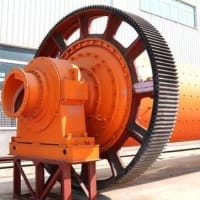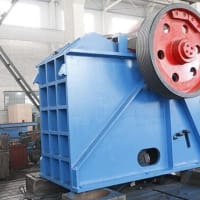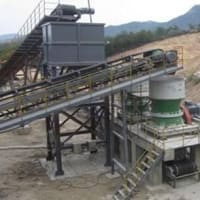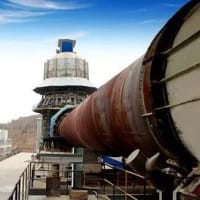
Cement kiln collaborative disposal of solid waste is also the use of high temperature treatment of waste.But different from waste incineration, the collaborative disposal of cement kiln directly utilizes the high temperature of cement production line kiln, and the temperature is much higher than that of waste incineration plant.Characteristics of cooperative disposal of solid waste by cement kilns.
(1) high incineration temperature.
The temperature of materials in cement kilns is generally higher than 1450℃, and the temperature of gas is higher than 1750℃ or so, even higher than 1500℃ and 2200℃.Under this high temperature, the organic matter in waste will produce thorough decomposition, general incineration removal rate of 99.99% above, for the waste of toxic and harmful components will be thoroughly "destroyed" and "detoxification".

(2) long stay.
Cement rotary kiln tube body long, waste in the cement kiln high temperature state for a long time.According to the general
According to the statistical data, the total residence time of materials from kiln head to kiln tail is about 4omin.The residence time of the gas above 950℃ is more than 8s, and the residence time above 1300℃ is more than 38, which can make the waste under high temperature for a long time
Good for waste combustion and thorough decomposition.
(3) stable burning state.
The rotary kiln of cement industry has a very stable combustion system with high thermal inertia.It is composed of rotating dense metal cylinder, brick masonry in kiln, crust formed in the firing zone and materials to be fired. It not only has a huge mass, but also increases the thermal inertia of the system due to the thermal insulation performance of refractory materials, and will not cause large temperature fluctuation due to the change of waste input and nature.
(4) good turbulence.
The flow direction of high-temperature gas and material in cement kiln is opposite, and the turbulence is strong, which is conducive to the mixing, heat transfer, mass transfer, decomposition, combination and diffusion of gas-solid phase

(5) alkaline environmental atmosphere.
The raw material composition used in the production of cement determines that there is an alkaline atmosphere inside the rotating density. The alkaline material inside the cement density can be neutralized with the acidic material in the waste as stable salts, which can effectively inhibit the discharge of acidic material and facilitate the purification of its tail gas. Moreover, it can be carried out together with the cement process.
(6) no waste residue is discharged.
In the process of cement production, there are only raw materials and clinker produced by calcining process, and there is no problem of slag produced by incineration in general incinerator
(7) solidify heavy metal ions.
The most heavy metal ions in the waste can be solidified in the clinker and finally into the cement product, avoiding the re-diffusion
(8) reduce overall emissions.
The substitution of combustible wastes for mineral fuels reduces the demand of the cement industry for mineral fuels (coal, natural gas, heavy oil, etc.).Overall, the emission of waste gas (CO2, SO2, CI, etc.) from cement production and incineration alone is greatly reduced.

(9) chu burning disposal points, strong adaptability.
The firing system of different process in cement industry, no matter it is wet kiln, semi-dry kiln, preheating kiln and cyclone preheating kiln with decomposition furnace, the whole system has different high temperature feeding points, which can adapt to different kinds of wastes of different properties and forms.
(10) good waste gas treatment effect.
Cement industry firing system and waste gas treatment system make the waste gas after combustion go through a long path and good cooling and dust collecting equipment, and have a high adsorption, sedimentation and dust collecting effect. The collected dust can be reused through the conveying system and returned to the raw material preparation system.
(11) the construction investment is small and the operation cost is low.
The use of cement compact-cement for waste disposal, despite the need for necessary modifications in process equipment and feeding facilities, and the need for new waste storage and treatment facilities, has greatly reduced investment compared with the construction of new dedicated incinerators.In terms of operating cost, although the depreciation of equipment, consumption of electricity and raw materials, labor costs and other costs increase, burning combustible waste can save fuel and reduce fuel costs. The higher the proportion of fuel replacement, the more obvious the economic benefits.
The page source:https://www.cementepc.net/productknowledge/Characteristics-of-cooperative-disposal-of-solid-waste-by-cement-kilns.html




















※コメント投稿者のブログIDはブログ作成者のみに通知されます